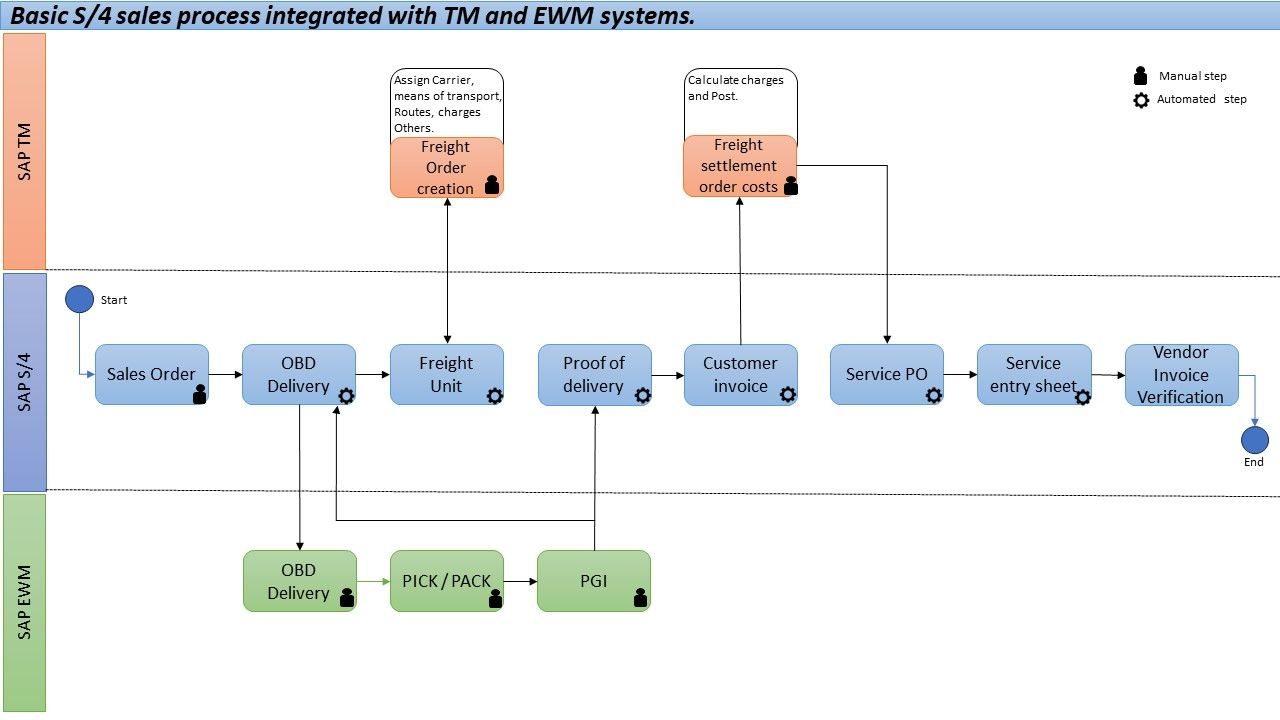This flowchart, prepared by Dafnis Araujo, illustrates the sales process within SAP S/4HANA that is integrated with the Transportation Management (TM) and Extended Warehouse Management (EWM) systems.
The process begins with a Sales Order being created in the S/4HANA system. The order triggers an Outbound Delivery (OBD), which is a key document facilitating the logistics process in SAP.
In the Logistics area, the OBD is handled by SAP EWM, where Pick/Pack operations are performed followed by a Post Goods Issue (PGI), which updates the inventory levels and financial accounts in SAP.
Once the goods are packed and ready for shipment, a Freight Unit is created in SAP TM, and this is where logistics planning occurs. This includes assigning a carrier, determining routes, and calculating charges for the Freight Order.
After the goods are shipped, Proof of Delivery is obtained, which is essential for confirming that the goods have reached their destination. This information is important for the next step in the Financials area, which is creating the Customer Invoice.
The process also involves Freight Settlement, where the costs related to the freight order are calculated and posted, ensuring that transportation expenses are accurately recorded.
Following the completion of service provision, a Service Purchase Order (PO) and a Service Entry Sheet are created to document and verify the services performed related to the delivery.
The last step involves Vendor Invoice Verification in SAP, where the invoices from the carriers or service providers are checked and validated against the service entry sheets and purchase orders. This ensures that the amounts billed for transportation and services are correct before payment is made.
The process ends once the vendor’s invoice is verified, which could then trigger payment processes, not depicted in the flowchart. This integrated flow ensures a smooth transition between sales, logistics, and financial operations within SAP.
